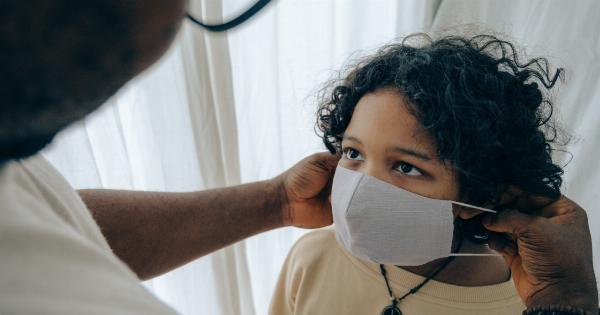The outbreak of cherubic sickness has created a grave concern worldwide, with an alarming escalation in cases being reported across various regions.
Understanding the symptoms, preventive measures, and staying informed about the latest updates is crucial to combating this highly contagious disease. In this article, we delve into the cherubic sickness, its rapid spread, and provide valuable information to help you stay informed.
What is Cherubic Sickness?
Cherubic Sickness, also known as Angel’s Disease, is a viral infection that primarily affects infants and young children.
It is characterized by a distinctive set of symptoms, including cherubic appearance, rosy cheeks, and a halo-like glow around the head. While the disease was believed to be benign in the past, recent outbreaks have shown that it can lead to severe complications and even fatalities if not managed properly.
Escalation in Cases
The number of cherubic sickness cases has been rapidly increasing over the past few months, causing widespread concern among parents, healthcare professionals, and authorities.
The exact reasons behind this escalation are still being investigated, but several factors contribute to the rapid spread of the disease:.
1. Lack of Awareness
Many parents and caregivers are unaware of the symptoms and preventive measures related to cherubic sickness, making it difficult to contain its spread.
Educating communities about the disease and promoting awareness is crucial in preventing further escalation.
2. Airborne Transmission
Cherubic sickness primarily spreads through airborne transmission. Infected individuals can release virus-laden droplets into the air while sneezing, coughing, or breathing. These droplets can then be inhaled by others nearby, leading to new infections.
The highly contagious nature of the disease makes it easier for it to spread rapidly within communities.
3. Lack of Vaccination
Currently, there is no approved vaccine available for cherubic sickness. The absence of a vaccination means that individuals remain susceptible to the infection, particularly infants and young children who have weaker immune systems.
Preventive Measures
While there is no foolproof way to prevent cherubic sickness, there are several measures that can help reduce the risk of infection:.
1. Hand Hygiene
Regularly washing hands with soap and water, especially before and after coming in contact with infants or young children, can significantly reduce the transmission of the virus.
Hand sanitizers can also be used when soap and water are not readily available.
2. Covering the Mouth and Nose
When sneezing or coughing, it is important to cover the mouth and nose with a tissue or the elbow. This practice helps prevent the release of virus-laden droplets into the environment.
3. Isolation of Infected Individuals
If someone in your household is infected with cherubic sickness, it is crucial to isolate them from others, especially infants and young children who are most vulnerable to the disease. This can help prevent further spread within the household.
4. Avoiding Crowded Places
As cherubic sickness is highly contagious, it is advisable to avoid crowded places where there is a higher risk of transmission. If possible, limit social gatherings and maintain a safe distance from individuals showing symptoms of the disease.
5. Seeking Medical Attention
If you suspect that you or your child may have cherubic sickness, it is important to seek medical attention promptly. Early diagnosis and appropriate treatment can help alleviate symptoms and prevent complications.
Staying Informed
In a rapidly evolving situation like the cherubic sickness outbreak, staying informed about the latest updates and guidelines is crucial. Here are some reliable sources to keep yourself updated:.
1. World Health Organization (WHO)
The World Health Organization is at the forefront in providing updates and guidelines regarding cherubic sickness. Their official website and social media channels can be trusted sources for accurate and up-to-date information.
2. Centers for Disease Control and Prevention (CDC)
The CDC is another reputable organization that provides valuable information and resources related to cherubic sickness. Their website offers insights into preventive measures, symptoms, and treatment options.
Conclusion
The escalation in cherubic sickness cases is a cause for concern, but by understanding the symptoms, practicing preventive measures, and staying informed, we can collectively overcome this viral infection.
Remember to follow reliable sources for accurate information and seek medical attention if needed. Together, we can protect our children and communities from the impact of cherubic sickness.































